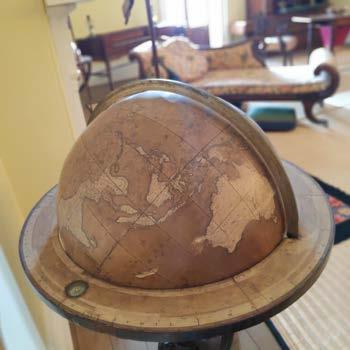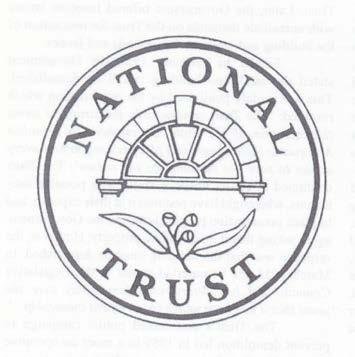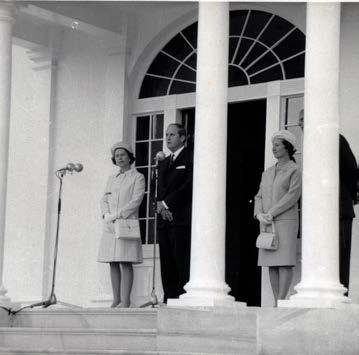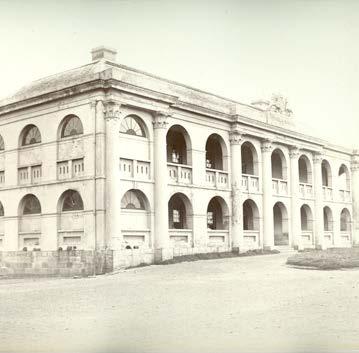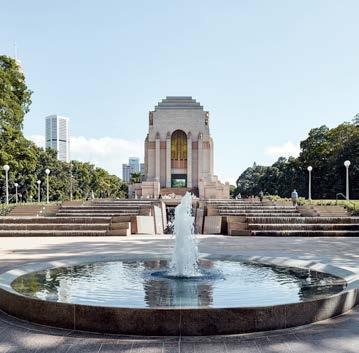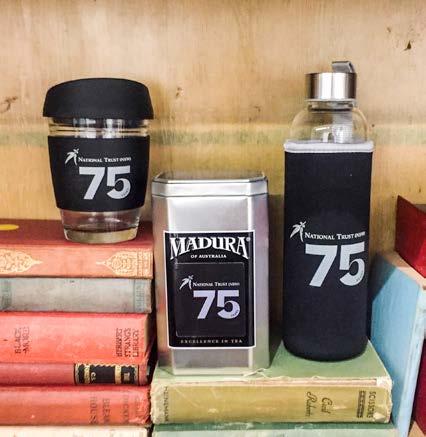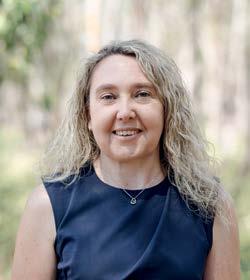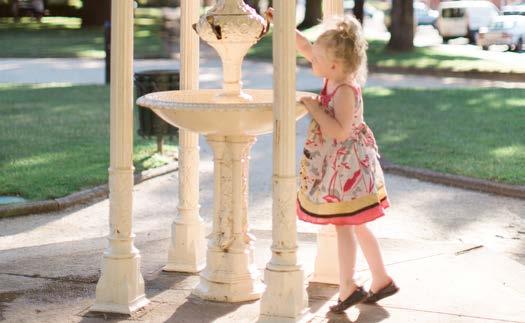
12 minute read
Conserve
Heritage Lost and Saved in the Fires
BY GRAHAM QUINT, DIRECTOR, CONSERVATION
Bushfires that swept through New South Wales from September 2019 to early February 2020 devastated the landscape, razed homes and towns to the ground, incinerated wildlife and claimed the lives of 25 people. While National Trust properties under threat in the Blue Mountains, the Southern Highlands and Tenterfield were saved, irreplaceable heritage across the state has been consumed by these fires.
It will be months before the National Trust can determine how many buildings of historic significance were damaged or lost. Councils and government authorities will need to concentrate their efforts in coming months on assisting people impacted by the bushfires and dealing with the continuing fire threat.
The assessment of impact on natural heritage has only just commenced. Places that have been threatened, damaged or destroyed by the fires include World Heritage Areas, National Parks, Nature Reserves, State Forests, private forested lands, farming and pastoral landscapes, historic gardens and entire ecosystems and their biota.
The National Trust will help to record these losses, liaising with firefighting experts, fire behaviour scientists and our expert staff and technical specialist committees. We aim to provide robust input into the proposed bushfire inquiry, to communicate our assessment with our members and ensure the community is aware of the scale and impacts of the bushfires.
Built Heritage Information related to the impact of the bushfires on buildings of heritage significance is new and emerging gradually. The former 1890 James Barnet Kiandra Courthouse, listed on the State Heritage Register and the recipient of a 2011 National Trust Heritage Award for adaptive re-use by the NSW National Parks and Wildlife Service, was burnt despite being in open country and well away from adjoining vegetation.
The National Trust is endeavouring to establish whether any of the historic buildings at Yerranderie were damaged or destroyed when the Green Wattle Creek fire passed through the area. On 21 December 2019 (declared catastrophic fire condition day), The Blackheath Campbell Rhododendron Garden was severely damaged by the Grose Valley fire. While the Conifer Garden was left intact, nearly all the native bush on the north side of the valley and the service road was severely burnt.
Most of the rhododendrons in the Species and the Quota areas had been destroyed, as had some plantings between the developed and the native areas on the north side of the creek. Even part of the swamp was damaged, due to ignition of methane gas, which the area emits. Firefighters prevented the blaze from crossing the valley to the main developed Garden area, saving the Lodge and other buildings.
The National Trust’s own property at Bargo was impacted by fire, with the loss of some buildings, but the dingoes at the property were saved from the fire (see page 5).
At Cobargo, west of Bermagui, the Bega Valley Shire Local Environmental Plan 2013 Cobargo Main Street Conservation Area and four heritage-listed buildings were destroyed by a bushfire. Nine buildings were destroyed, including the former 1891 Grain Store, two c1880 two-storey weatherboard buildings, and the 1882 former Australian Joint Stock Bank.
Several National Trust properties were under threat in the Blue Mountains as fire came within 500 metres of the colonial buildings at Woodford Academy, and one kilometre of Everglades House & Gardens with its Art Deco architecture and Paul Sorensen designed garden. When fire crossed the Grose River below the Norman Lindsay Gallery & Museum Faulconbridge, we placed oil paintings and illustrations in storage offsite.
Greater Blue Mountains World Heritage Area Covering about 10,300 square kilometres, this World Heritage Area is about one-third the size of Belgium, or twice the size of Brunei, with large areas of wilderness. It has rare and different plants and animals that tell the story of Australia’s great age, showing the evolution of Australia’s unique eucalypt trees and the other plants and animals that live among them.
It comprises eight protected areas in two main blocks that are separated by land set aside for transport and housing, including Jenolan Caves Karst Conservation Reserve, Blue Mountains National Park, Wollemi National Park, Yengo National Park, Nattai National Park, Kanangra-Boyd National Park, Gardens of Stone National Park and Thirlmere Lakes National Park.
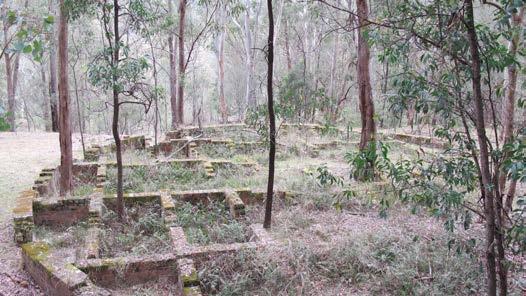
On 26 October, a lightning bolt started a fire near a disused airstrip at Gospers Mountain in the Wollemi National Park. This became the epicentre of the biggest forest fire started from a single ignition point that Australia has ever known. By mid-January, the Gospers Mountain Fire and other major bushfires had joined, and 80 percent of the Greater Blue Mountains World Heritage Area was burnt.
The Gondwana Rainforest of Australia Formerly known as the Central Eastern Rainforest Reserves, the Gondwana Rainforests of Australia are older than the Amazon rainforests, and form the most extensive area of subtropical rainforest in the world. They are a UNESCO World Heritage Site.
The area includes 50 reserves, covering 3,665 square kilometres, and is sited around the New South Wales-Queensland border. The Gondwana Rainforests are so called because the fossil record indicates that when Gondwana existed it was covered by rainforests containing the same kinds of species living today. The number of visitors to the reserve is about 2 million per year. Fifty per cent of the Gondwana Rainforests of Australia were burnt by the bushfires in New South Wales and Queensland.
Landscapes listed on the National Trust Register A survey of Landscape Conservation Areas listed on the National Trust Register was undertaken in December to determine the impact of the bushfires, and 17 areas had been impacted by the fires. By 21 January, several more areas had been affected.
Among the worst-affected areas, Wolgan Valley was totally burnt. Ninety per cent of Hastings Valley, containing large tracts of rainforest and the largest unlogged Antarctic beech forests in New South Wales, had been impacted. Half of the Ben Halls Gap Old Growth Forest Landscape Conservation Area has also been burnt. This area was one of the best remaining examples of unlogged, high nutrient, old-growth forest on the Northern Tablelands of New South Wales.
About 60 percent of the Washpool Landscape Conservation Area, containing the largest remaining undisturbed rainforest in New South Wales and the largest intact coachwood rainforest in Australia, had also been severely damaged by the fires.
From top The majority of the Jenolan Caves area was destroyed; ruins at Newnes in the Wolgan Valley, which was completely burnt out by the bushfires; John Hewson.
TRUST TALKS Why is Climate Change a Hot Topic for Heritage?
Keynote speaker: John Hewson AM Professor and Chair, Tax and Transfer Policy Institute, Crawford School & the Climate Change Institute, Australian National University
This event was originally scheduled to take place on 2 June 2020 at NSW Parliament House, Macquarie Street, Sydney. We have postponed this event to October 2020 and will share the new date in the next edition of this magazine, on our website nationaltrust.org.au/whats-on-nsw/, via our eNews and on Facebook @nationaltrustau Tickets: Early bird prices apply until 1 August. Tickets include drinks and canapes. Book at eventbrite.com.au Enquiries: Jilly Clark, email jclark@nationaltrust.com.au

COMING UP The Value of Heritage
6 August, 5.30pm – 8pm, NSW Parliament House. To register your interest for this talk, email Jilly Clark, jclark@nationaltrust.com.au
Getting Ready for Rain
BY NICOLE CRABB, DIRECTOR OF DEVELOPMENT AND MEMBERSHIP

New South Wales is suffering from the most severe drought on record. While some parts of the state have been experiencing rain, it hasn’t been enough to break the drought, and when rain has fallen, many properties simply have not been ready to harvest it. As a result, the magnificent pastures, grounds and gardens of many historic homesteads, including Saumarez in Armidale, Dundullimal in Dubbo and Riversdale in Goulburn, are under threat. Our goal is to make these homesteads drought-resistant, so every drop of rain that falls can be captured. With your help, our historic homesteads will be ready for rain.
Located in Armidale, Saumarez is a 10-hectare grazing property that was first inhabited by British settlers in the 1830s. Today, the property includes an elegant two-storey, 30-room Edwardian mansion, built between 1888 and 1906, and 15 farm buildings dating up to 1910.
The highlight of any visit to Saumarez is a stroll through the magnificent gardens, which were planned and constructed by the Saumarez White family at the turn of the 19th century. The beautiful Heritage Rose Garden, established on the site of the old homestead orchard, includes 600 roses, which represent each of the major cultivar groups.
Built in the 1840s as the head station of a 6,500-hectare squatting run, Dundullimal Homestead has survived in near original condition, and today is the oldest building in the Dubbo region open to the public. Believed to be the oldest sophisticated slab home in Australia, Dundullimal and its sandstone stables, timber church and shed are a living illustration of rural life on an isolated property during the 19th century.
Riversdale is a historic four-hectare property located on the outskirts of Goulburn. The estate comprises a Colonial Georgian home, originally built in 1840 as a coaching inn, as well as several outbuildings, including a magnificent stone barn dating back to 1828. A feature of the estate is the early colonial garden, with its outstanding array of perennials, shrubs, bulbs, fruit trees and shelter trees.
Urgent repairs needed Due to the catastrophic drought, the following urgent work is required to repair and improve these historic homesteads so that, when the rain does fall, not one drop will be wasted.
Saumarez Homestead • Conserve and repair historic underground cistern so it can once again store water • I nstall new water reticulation system across site • Install new rainwater collection system and upgraded guttering
Dundullimal • Investigate use of historic well to supply water • U pgrade ageing infrastructure, such as broken water pipes and rusted gutters • Replace water tanks with heritage-compliant rainwater tanks • Install watering system across the site
Riversdale • Remove existing aged guttering • Install galvanised quad guttering to connect with stormwater drainage lines • I nstall two 7,500 litre galvanised water tanks • I nstall new electrical pump.
Clockwise from left The land around Dubbo is extremely dry; Riversdale in Goulburn needs new guttering and water tanks to cope with rain when it arrives; the impact of the drought is clear at Dundullimal.

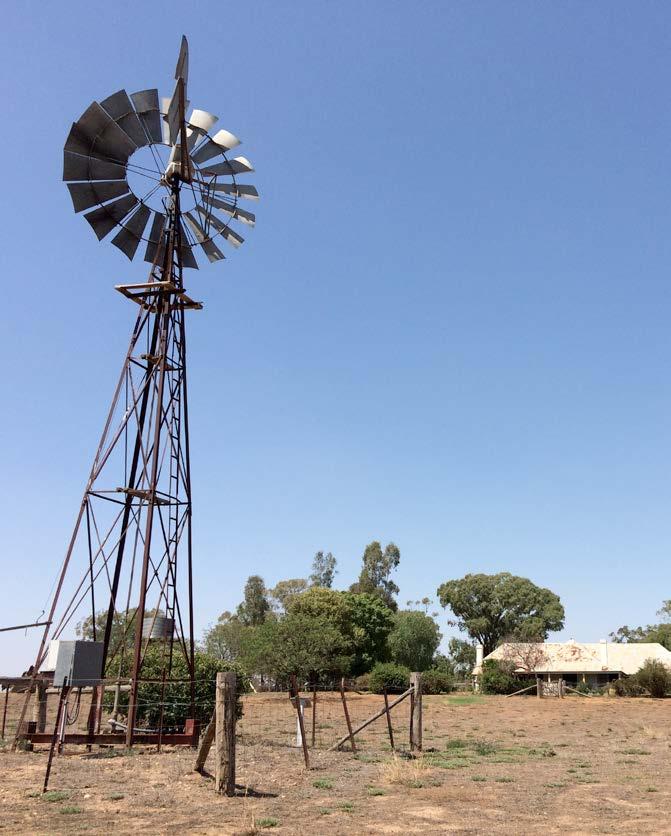
Help us get our heritage homesteads ready for rain

Due to the severe drought, many heritage NSW homesteads, including Saumarez, Dundullimal and Riversdale are under threat. While some rain has fallen, these properties have not been ready to harvest it. Urgent funds are needed to make these homesteads drought resilient with new irrigation systems, tanks, bores and guttering. So that every drop of rain that does fall is captured.

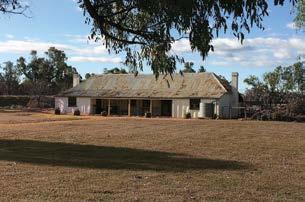

Dundullimal Homestead
PLEASE DONATE TO THE NATIONAL TRUST (NSW) DROUGHT APPEAL TODAY. Donate securely online at www.nationaltrust.org.au/donate-nsw or call our Gift handling team on (02) 9258 0156
Riversdale
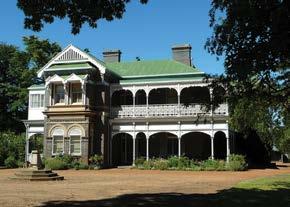

Saumarez Homestead
Today, Yesterday and Tomorrow
BY SIMONE PARROTT, 75TH ANNIVERSARY PROGRAM MANAGER
The National Trust archives contain thousands of stories. In celebration of our 75th Anniversary, we have highlighted snapshots of some of the people, places, patrons, campaigns and initiatives that haveshaped our organisation.
Heritage comprises the practices or characteristics that are passed down through the years, from one generation to the next. The National Trust’s heritage has evolved over 75 years and we have captured a collection of these stories.
It all started with a list – well, actually two. The National Trust of Australia (NSW) was established by Annie Wyatt on 6 April 1945 following approval of its formation by the Save the Trees Forestry Conference, which took place in November 1944 and included members from 29 groups. On forming, the National Trust (NSW) produced a list of 39 sites across New South Wales worthy of preservation – the founding principles of the National Trust Register, which continues today.
Symbols are important, and every organisation needs an emblem. Ours was initially a gumnut and fanlight – designed in 1957 by Claude Lee (Annie Wyatt’s son-in-law) – representing the main activities of the National Trust. In 1986 the spray of three gum leaves was incorporated and adopted across Australia, representing ‘today’, ‘yesterday’ and ‘tomorrow’. Of course, an organisation is nothing without its people, and in 1945 we were formed by volunteers. This legacy has continued, and in 2020, 75 per cent of the work undertaken by the National Trust (NSW) is with the support of volunteers – this includes the work of our Branches and Committees who have spearheaded awareness, advocacy and fundraising campaigns across the decades. We also celebrate our donors and supporters, who have provided the funding, dedication and influence to ensure we achieve our mission and vision.
We have saved buildings and landscapes that are now considered to be the very essence of our cities and towns. One of them is on the Isle of Mull in Scotland, but a key part of the story of Australia. We have sustained best practice in bushland regeneration. We have collected items, documents, books, textiles, instruments, jewellery and ephemera that represent the story of a new Colony, an emerging nation and the place we call home today.
These are a few of our many stories, and they are on show as we celebrate our 75th Anniversary in 2020.
Our Story on Show
The Celebrating 75 Years Exhibition will be on display from August to November 2020 at the National Trust Centre at Observatory Hill in Sydney. Entry is free. If you have a story you would like to share about the history of the National Trust in New South Wales, please email 75years@nationaltrust.com.au
Clockwise from top left The very first National Trust membership card; gumnut and fanlight symbols featured in the National Trust Logo from 1957 to 1986; Sydney’s National Trust Centre was formerly a military hospital; Queen Victoria Building; Sydney’s Anzac Memorial Centenary Project was a National Trust Heritage Award winner in 2019; Macquarie’s Mausoleum on the Isle of Mull, Scotland; heritage-listed Myall Lakes; the Terrestrial Globe at Old Government House; Queen Elizabeth II with Annie Wyatt's son Ivor at Old Government House in 1970.

